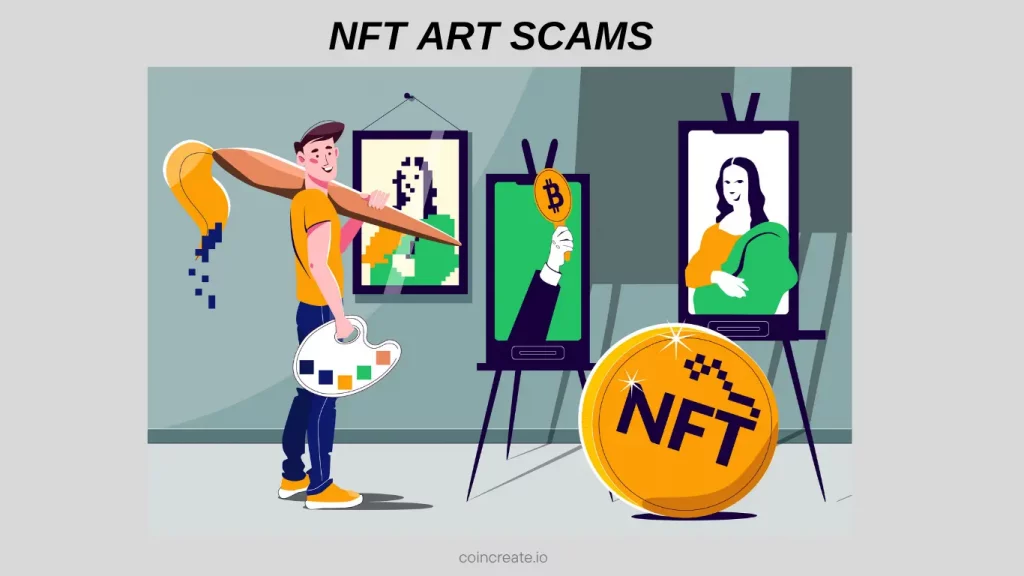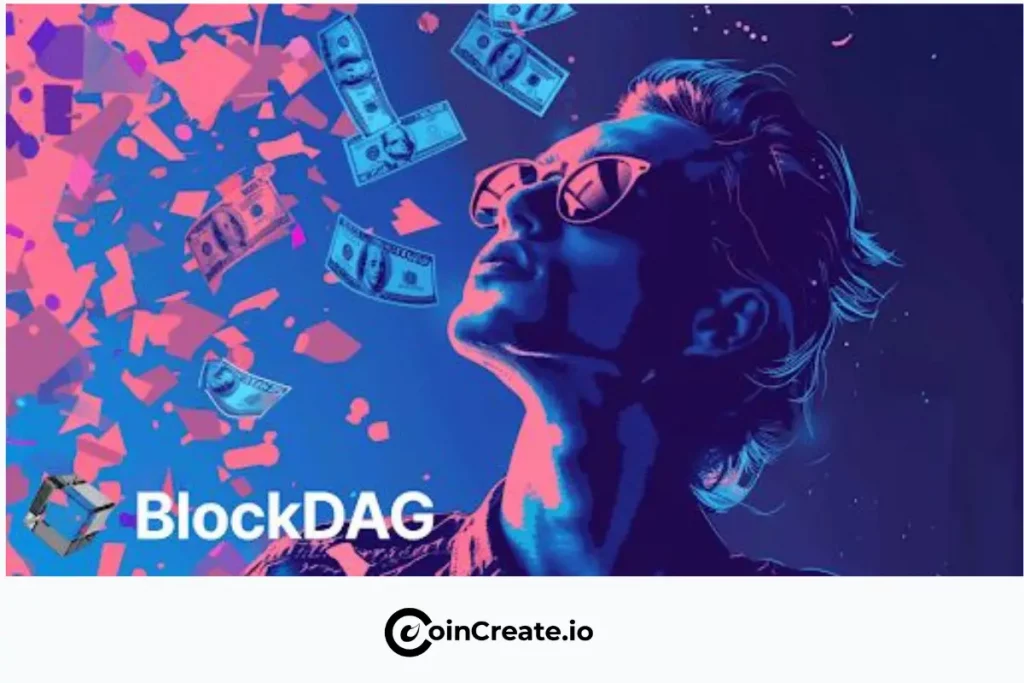NFT Art Scams How to Spot & Avoid Fraudulent NFTs
Okay, let’s get real about NFT art scams. I mean, we all know NFTs are the big thing, right? But with popularity comes the inevitable…scams. These are basically fraudulent activities that take advantage of the whole NFT craze. We’re talking about counterfeit NFTs, low-value junk, and people getting tricked into investing in stuff that’s basically worthless. It’s a mess out there! I think the rapid growth of the NFT market, the lack of solid rules, and how easy it is for scammers to fake identities are the big reasons why this is happening.

Why Are Scams Exploding? Here's My Take
- Lack of Regulation: The NFT world is like the Wild West. There aren’t enough rules, and it’s tough to enforce any standards. That means investors are super vulnerable.
- Easy Impersonation: Scammers can pretend to be artists, big-name celebs, or even create fake social media profiles to push their bogus NFTs. It’s shockingly easy to do.
- Fear of Missing Out (FOMO): The hype around NFTs is insane. People are afraid they’ll miss out on the next big thing, so they rush into buying without doing their homework.
- Blockchain Vulnerabilities: Yeah, blockchain is secure, but marketplaces and user accounts? They can have weaknesses that hackers exploit.
The Impact on Digital Art
- Loss of Trust: NFT scams are killing trust in the digital art market. This hurts both artists and collectors.
- Financial Losses: People are losing serious money to rug pulls and fake NFTs. It’s devastating.
- Damage to Artists: Scammers are stealing artists’ work, undermining their integrity, and causing them financial harm. It’s infuriating
Major NFT Art Scams
Okay, so the NFT art market is basically a playground for scammers right now. It’s growing fast, has few rules, and relies on the anonymity of blockchain. Here’s my take on the most common scams, how they work, and how you can protect yourself
Rug Pull Scams
- How It Works: The developers of an NFT project make big promises – like exclusive game access or metaverse integration – to get people to invest. Once they’ve raised a bunch of cash, they disappear, leaving buyers with NFTs that are totally worthless.
- Example: Remember the Frosties NFT project? They raised $1.2 million in 2022, then the creators just vanished, deleting everything.
- How to Avoid It: Dig into the team’s background and check their project roadmaps.
Steer clear of projects with anonymous developers or vague goals.
Phishing and Impersonation
- How It Works: Scammers pretend to be artists, celebrities, or even NFT platforms using fake social media accounts, emails, or websites. They try to steal your wallet info or your money.
- Example: Artists often get fake offers to buy their NFTs. The scammers lure them into sharing wallet details or paying made-up “gas fees.”
- How to Avoid It: Never, ever share your private keys or recovery phrases. Double-check account authenticity through official channels.
Counterfeit Art and Plagiarism
- How It Works: Scammers create NFTs out of stolen or AI-generated artwork and sell them as if they were original.
- Example: Evolved Apes sold 10,000 NFTs in 2021, promising to fund a game. But the developer ran off with $2.7 million, leaving buyers with low-quality JPEGs.
- How to Avoid It: Verify the artist’s identity through official websites or social media. Use platforms with verification systems (like OpenSea’s blue checkmarks).
Pump-and-Dump Schemes
- How It Works: Scammers artificially inflate the price of an NFT through social media hype, fake celebrity endorsements, or coordinated bidding. Once the price is high enough, they sell their own holdings, causing the price to crash.
- Example: The Fractal NFT project lost users $150,000 in 2021 after a fake giveaway link drained their wallets.
- How to Avoid It: Analyze trading volume and price trends for anything that looks off. Avoid projects where the price suddenly spikes for no clear reason.
Fake Giveaways and Airdrops
- How It Works: Scammers promise free NFTs or tokens in exchange for your wallet access, personal data, or upfront payments.
- Example: A fake Rarible airdrop asked users to deposit cryptocurrency, which was then stolen.
- How to Avoid It: Ignore unsolicited offers and always verify giveaways through official channels. Never pay “gas fees” to get free NFTs. That’s a huge red flag.
The Real-World Impact
- Financial Losses: People are losing millions every year. Rug pulls alone account for over $1 million per incident.
- Erosion of Trust: Scams are scaring away new investors and damaging the reputations of legitimate artists.
- Legal Risks: Because the rules are so unclear, scammers can often operate with little fear of consequences.
My Key Safety Measures
- Verify Authenticity: Confirm NFT ownership and artist identity through blockchain explorers like Etherscan.
- Secure Wallets: Use hardware wallets and enable two-factor authentication.
- Avoid FOMO: Do your homework before investing in trending projects.
By understanding these tactics, I believe investors and artists can stay safer in the NFT world, reducing risks and supporting real innovation.
How to Spot a Scam NFT Project
Figuring out if an NFT project or artist is a scammer takes some work. You’ve got to be alert and watch for red flags. Here are some warning signs and strategies I use to verify the legitimacy of NFTs
Signs of a Scam Artist or Project
- Lack of Transparency: If the team behind the project is anonymous or unverified, that’s a huge red flag.
- No Clear Roadmap: A project should have a clear plan and timeline for development. If it doesn’t, be suspicious.
Artificial Hype
- Fake Celebrity Endorsements: Double-check if endorsements are real. Sometimes, they’re bought and paid for.
- Overly Aggressive Promotion: Watch out for projects that are heavily promoted by bots or fake accounts on social media.
Fake Followers and Engagement
- Discord Invite Contests: Projects using bots to inflate follower counts often have these contests.
- Unnatural Engagement: A high number of followers with low engagement is a bad sign.
Exorbitant Mint Prices
- High Initial Prices: Genuine projects usually start with reasonable mint prices to build a community.
Marketplace Manipulation
- Floor Sweeps: If a project artificially keeps prices high by banning listings below a certain price, be careful.
Verification Tools and Strategies I Use
Blockchain Explorers
Use tools like Etherscan to verify the NFT’s origin and ownership.
Digital Certificates of Authenticity
Check if the NFT has a digital certificate that includes details like token identity and creator’s signature
Smart Contract Audits
Make sure the project has had a smart contract audit to identify vulnerabilities.
Reverse Image Search
Use Google Images to check for plagiarized artwork.
Community Feedback
Engage with the community and read reviews to see what others are saying about the project.
How I Verify NFT Legitimacy
Check Artist Identity
Verify the artist’s identity through official social media channels or websites.
Use Reputable Marketplaces
Only buy NFTs from well-known platforms that vet artists and projects.
Stay Informed
Keep up with the latest security threats and scam tactics in the NFT space.
How to Stay Safe & Avoid NFT Scams
Staying safe in the NFT market requires a mix of secure buying habits, verifying NFT authenticity, and using trusted platforms. Here are some best practices that I follow
Secure Your Wallet
Hardware Wallets
Store your private keys in hardware wallets like Ledger or Trezor to protect against hacking.
Two-Factor Authentication (2FA)
Enable 2FA for all accounts related to NFT transactions.
Offline Storage
Keep private keys offline to prevent unauthorized access.
Safe Buying Habits
Research Projects
Check the project's history, roadmap, and community feedback.
Avoid Unsolicited Offers
Be wary of giveaways or free NFTs from unknown sources.
Double-Check Links
Ensure you are using official links and not fake ones created by scammers.
Case Study The ArtStation
Scammers contact artists on ArtStation, offering high prices for their work but only as NFTs. They often claim to be collectors or part of a digital exhibition. Once engaged, they may ask artists to pay “gas fees” for minting the NFTs, which are then used to scam the artist out of money.
- Example: Artists have reported receiving emails offering thousands of dollars for their work, only to be asked to cover minting fees, which are then stolen by the scammers.
The Future of NFT Security & Scam Prevention
| Category | Key Developments |
|---|---|
| Trends in NFT Security |
AI-powered fraud detection for suspicious transactions. Advanced blockchain analysis for NFT authenticity. Decentralized identity solutions for privacy and scam prevention. Web3 security frameworks for NFT marketplaces. |
| Future Challenges |
Ensuring seamless security across multiple blockchains. Need for clearer regulatory frameworks to protect users. Increasing user education on NFT security best practices. |
| Evolution of NFT Security Tools |
AI-driven smart contract audits for vulnerability detection. Advanced NFT authentication for improved verification. Multi-chain security tools to support NFTs across various blockchains. |

